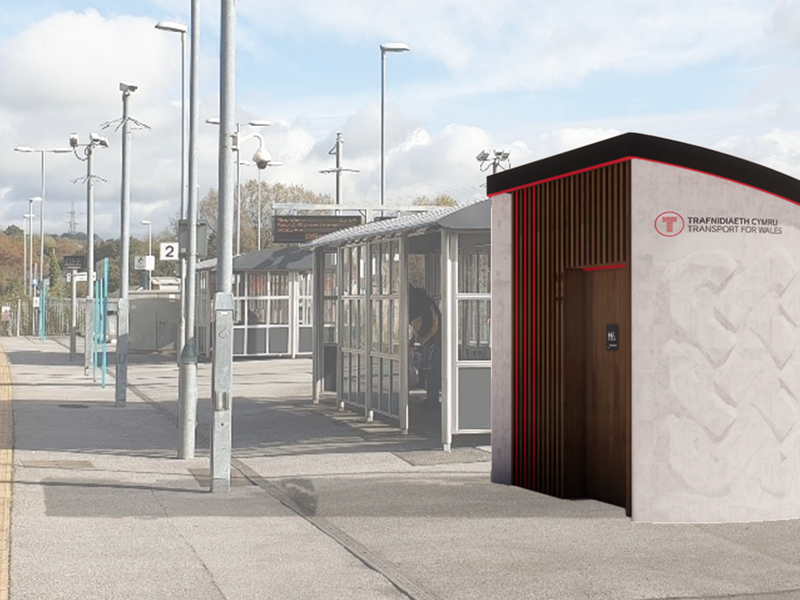The idea of producing built assets using 3D concrete printing (3DCP) technology arose from discussions between Transport for Wales (TfW) and Amey Consulting in August 2021. Amey and TfW Innovation Services identified the technology as one of 10 promising innovations that could facilitate the renewal of the Core Valley Lines (CVL), as well as benefit TfW’s other programmes and wider Welsh infrastructure schemes.
It was agreed that Amey would develop a business case for the design and build of a prototype toilet block, or pod, using 3DCP. If successful, TfW would be the first in Wales to introduce the radical new technology and the first in the UK to design and install a 3DCP toilet pod.
The process works as follows. A 3D digital model of the asset is created, then specialised ‘slicing’ software generates a toolpath from the model to the robots. The asset is constructed using a quick drying mortar mix which is printed by mobile robots on site or by fixed (gantry) robots at an offsite facility. The structure can be output as panels for assembly or as a complete unit.
A comparison of efficiencies revealed that 3DCP offers several benefits compared to traditional concrete or steel construction. It was estimated that the 3DCP pod would be around (18%) cheaper than a brick and block version, for example, and would take half the time and half the labour to print and install. There is a significant carbon saving of 65% compared to brick and block or steel, and each pod has the potential to create at least five new green/digital jobs.
The 3DCP concept is suited to a diverse range of concrete structures, such as bridges and temporary works as well as service facilities. Once a design has been created and coded, it is easy and cost effective to replicate. Customers placing repeat orders would benefit from economies of scale. Amey foresees numerous applications for the technology in the rail industry as well as the wider infrastructure sector.
A 3D digital design can easily be modified to suit the needs of the customer or location, or to make improvements. In the case of the toilet pod, for example, there is the potential to integrate sensors within the design to gather operational data once the pod is in use. This information could be used to support asset management by monitoring efficiency, facilitating maintenance, and improving the customer experience.
Developing the business case and the detailed design comprised phase one of the project.
Phase two follows TfW’s approval of the design. Twelve 3DCP pods are planned initially, which will result in cost savings to the CVL renewal programme if built. The first step is to construct a working prototype at Amey’s Treforest site. This will act as both a showcase and test for the new (and relatively untried) technology, while enabling the project team to ensure the built asset matches the 3D model and achieves the appropriate standard of quality.
